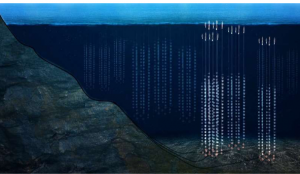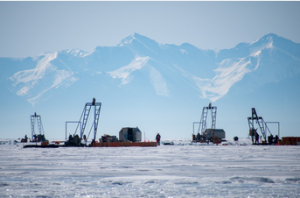Non-accelerator neutrino physics and astrophysics.
Studying the properties of neutrinos is one of the most interesting problems in modern particle physics. It is shown that neutrino physics at the present stage is one of the most promising areas for obtaining information about possible extensions of the existing theory. The priority problems from this point of view and experiments aimed at solving them, as well as the role of JINR in these experiments are discussed. It is demonstrated that new projects aimed at solving priority problems of neutrino physics are inextricably linked with progress in the development of technologies for creating new scintillation materials and photodetection.
The following projects/experiments are presented on the CICC,
neutrino physics : DANSS, DUNE, NOva, DsTau(NA65), JUNO, DayaBay, DarkSide, BOREXINO
astrophisics : Baikal-GVD, Taiga, Monument
The LIT site provides all computing and storage (EOS) resources. In December 2017, the Laboratory of Nuclear Problems purchased 4 Dell computing servers equipped with Intel Xeon E5 processors, which are installed in MLIT and are used for modeling and analyzing data from the Daya Bay and JUNO experiments within the MLIT cloud infrastructure.
As of 2023, the following EOS physical space storage resources are provided:

baikalgvd 2400.00TB borexino 200.00TB
danss 800.00TB darkside 20TB
dayabay 1300TB dstau 50TB
juno 2000.00TB monument 200.00TB
Briefly about the projects:
Baikal-GVD – Study of ultra-high energy neutrino fluxes from space, search for hypothetical particles – magnetic monopoles, as well as particles – candidates for the role of dark matter particles. On March 13, 2021, the ceremonial launch of the largest deep-sea neutrino telescope in the Northern Hemisphere, Baikal-GVD, took place on Baikal. Collaboration: The Baikal-GVD Collaboration includes 9 institutions and organizations from 4 countries.
TAIGA – Designed to study the high-energy part of the gamma-ray spectrum of the Universe. The main goal of the project is to find an answer to the question of the origin of cosmic rays in the range from 1014 to 1018 eV.
Monument Project: Conventional muon capture measurements to test nuclear matrix elements of 2β decays. The goal is to carry out experimental measurements of muon capture on several daughter (with respect to candidates for neutrinoless 2β-decay) nuclei.
JUNO – (Jiangmen Underground Neutrino Observatory, China) is a planned precision experiment with new generation reactor antineutrinos, designed to determine the hierarchy of neutrino masses.
DANSS – dedicated to the search for sterile neutrinos. The compact neutrino spectrometer is safely installed next to the reactor. The uniqueness of the spectrometer lies in its proximity powerful nuclear reactor and allows you to obtain data of high scientific value with unprecedented statistics
DUNE – Deep Underground Neutrino Experiment is a new generation experiment with accelerator (anti)neutrinos, which is being created to clarify and measure the still unknown parameters that determine the process of neutrino oscillations. Its main tasks are to measure the order of neutrino masses and the phase of violation of CP invariance in the lepton sector.
NOvA – designed to study the phenomenon of neutrino oscillations in a beam of muon neutrinos. NOvA detectors allow additional physical analyzes such as: studying atmospheric muons, searching for magnetic monopoles, exotic signals coinciding with the registration of gravitational waves, as well as neutrino bursts from a collapsing supernova. Within the framework of topic 1099 “Research of neutrino oscillations”, a computing infrastructure at LIT was created and is being developed to expand the computing capabilities of the NOvA experiment. DsTau (NA65) – study of tau neutrino production in proton-nucleus interactions at the SPS accelerator DayaBay – Reactor antineutrino experiment
DarkSide is an extensive direct search program for dark matter particles called WIMPs, which is focused on a series of experiments using liquid argon. The detector used in the DarkSide project is a type of two-phase time-projection chamber. Today, DarkSide is a large scientific collaboration that includes scientists from 45 research centers in different countries.
BOREXINO – The Borexino liquid scintillation detector is an ultra-sensitive instrument designed to study solar neutrinos. “A needle in an egg, an egg in a duck, a duck in a hare, a hare in a chest” – such an association from a fairy tale arises when you imagine the device of the detector of the Borexino experiment.



